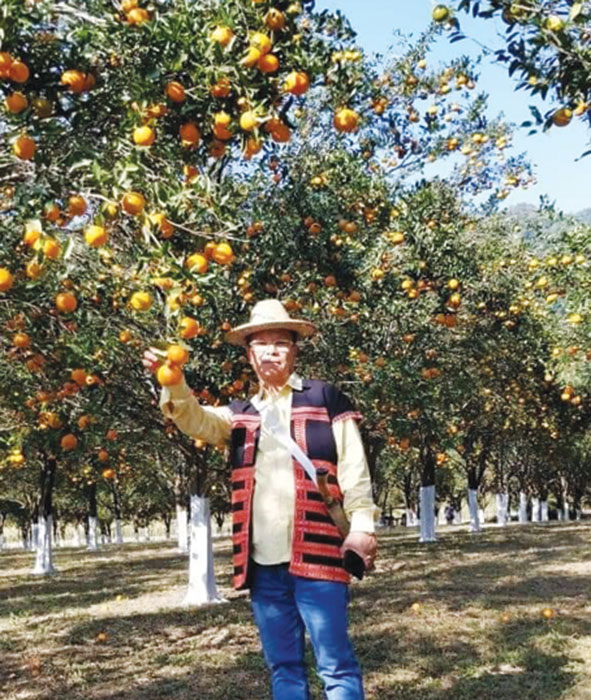

Pest infestation and changing weather pattern a threat
[ Amar Sangno ]
ITANAGAR, 16 Dec: The hills of Dambuk in Lower Dibang Valley district are draped in the blanket and sweet scent of oranges during winter.
At a time when the entire country and the world are filled with Covid-induced distress stories, of wreaked economy and farmer protests, orange farmers of Dambuk have positive stories to share this harvest season.
A 59-year-old Aduley Menjo says, “Unlike many parts of the country, the Covid-19 pandemic had little impact on the orange farmers, thanks to good yield.”
“The Coronavirus did not impact us much as the buyers from Tripura and Assam had already booked two of my gardens. They also came to inspect the gardens around mid-September,” said Menjo.
“However, each year, the orange trees dry little by little and it is causing a sharp decline in fruiting,” he said.
“Gaya saal toh khaliram tha (Last year there was no earning),” he rued, stating that pest infestation has led to a decline in citrus fruits in the area.
Menjo, who has been growing oranges for the past 10 years earns anywhere between Rs 4 lakh to Rs 6 lakh depending on how favourable the weather and the market are.
He is among the self-sustained progressive farmers in Dambuk area with an orange orchard of nearly two thousand fruiting trees at Akoko (Dambuk) overlooking his paddy field.
Notably, his orchard was the site for the Orange Festival of Music and Adventure (OFAM) till its fourth edition.
We also have Don Pertin whose family has been growing oranges for nearly four decades now.
Don is the son of award-winning progressive farmer Kangken Pertin, a pioneer in transforming Dambuk as the land of oranges. Kangken had started farming oranges in 1982.
The family earns up to Rs 30 lakhs annually from the orange orchards, making them one of the highest earners from Dambuk area.
Don says that he did not face any challenges in marketing the oranges despite the Covid-19 national lockdown.
“We started getting calls from prospective buyers by early September. They came and saw the gardens and paid some amount in advance. By the time the oranges started ripening, the restriction over travelling and movement within the country had been relaxed,” said Don.
However, unlike previous years where he would sell oranges in bulk amounts, he is currently selling the oranges per piece.
“Let’s see how much we get,” Don said.
“We don’t need to go out to sell our oranges. Buyers from Karimganj in Assam and other parts of India come to buy them,” said Atek Linggi.
The 54-year-old farmer reportedly earned Rs 28 lakh this year alone. Now he is helping the buyers in plucking oranges.
“They contacted us over the telephone and fixed the rate after visiting the orchards. That’s how our market works,” Linggi added.
He has six orange orchards with more than six thousand plants at Kepang village.
“There is variation in size this year. The fruits are smaller but still juicy,” he said, adding that the change in the weather pattern and pest infestation could be the reasons.
Linggi further said that growing oranges is a costly and laborious affair with pest infestation commonly occurring in the months of June, July and August.
Though orange growers are hard-pressed by pest infestation, particular twig dieback (disease common among citrus trees), Linggi said that “the department of horticulture has not extended any guidance or technical assistance.”



